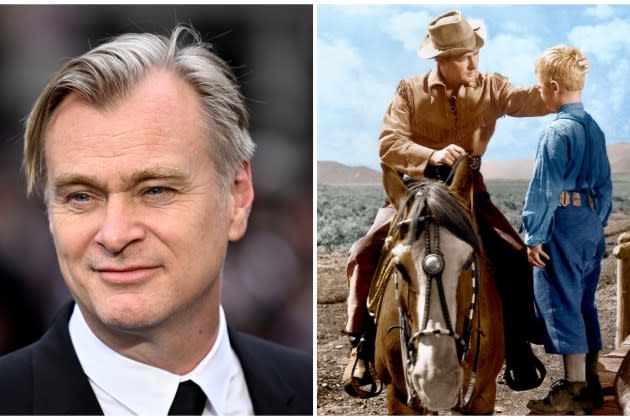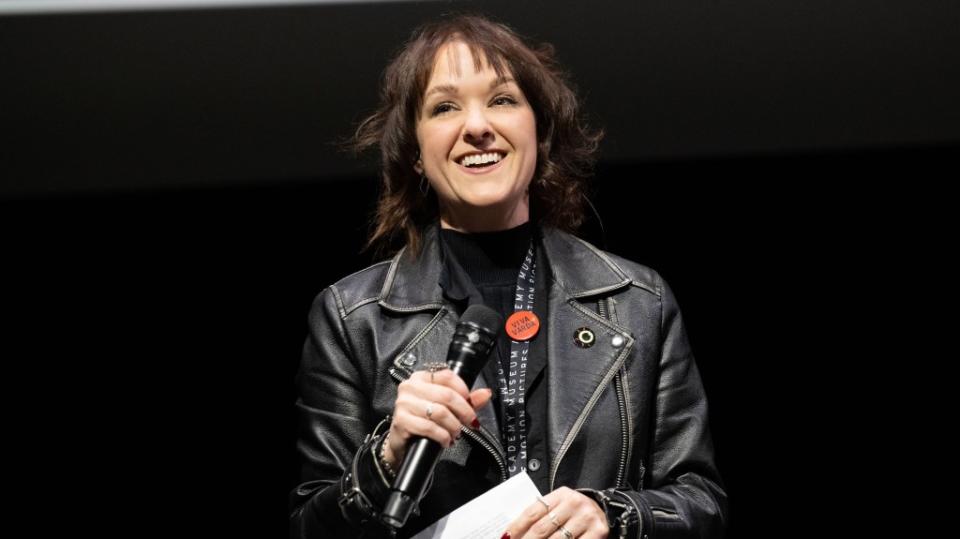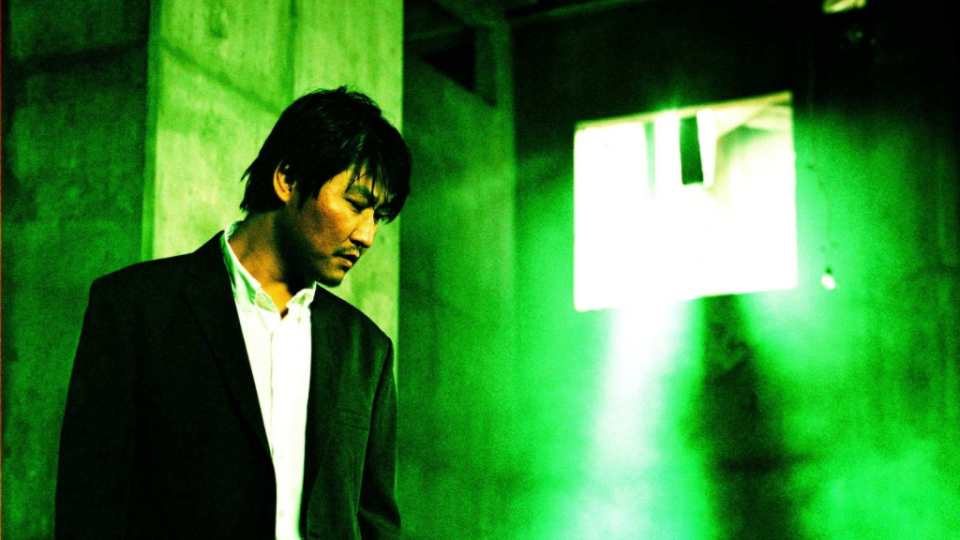Academy Museum’s Big Winter: Christopher Nolan Presents ‘Shane,’ New Programming Head, Disaster Movies and More
- Oops!Something went wrong.Please try again later.
- Oops!Something went wrong.Please try again later.
- Oops!Something went wrong.Please try again later.

Two years in, the Academy Film Museum is rolling full steam ahead with a new programming director and a packed slate of upcoming films for the winter season. On Dec. 10, Christopher Nolan will present the classic Western “Shane” on its 70th anniversary and speak about the film for the George Stevens Lecture.
Other spotlight programs include:
More from Variety
Christopher Nolan on Turning 'Oppenheimer' Into an Near-$1 Billion Hit - And What's Next
Christopher Nolan, Maite Alberdi and Celine Song to Be Honored at Sundance Opening Night Gala
Christopher Nolan's 'Oppenheimer' Helps Lift Imax Quarterly Earnings
A retrospective film series on “Parasite” actor Song Kang-ho in-person for four conversations starting Dec. 7
A 10th anniversary screening of “12 Years a Slave” on Feb. 25 with Steve McQueen.
“3D-cember” with screenings like “Jaws” and “Frozen” in 3D
“Works of Enduring Importance: 35 Years of the National Film Registry” starting Dec. 14
“Beware the Elements! Natural Disasters on Film” starting Jan. 4
A screening of 1972’s “Buck and the Preacher” will pay tribute to Harry Belafonte
“Echoes of Africia” presents African stories on film from Feb. 1 to Feb. 9
K.J. Relth-Miller just took over as Director of Film Programs for the the Academy Museum of Motion Pictures, and she’s already brimming with ideas for programming the Los Angeles screening venue.
Relth-Miller, who was promoted after Bernardo Rondeau exited to join the Lucas Museum, had already served as associate director and interim director of the film program, curating programs such as the recent like the recent “Enter the Vardaverse.” Since the museum’s opening, the screening program has drawn enthusiastic crowds for an eclectic mix of films related to current exhibitions like the John Waters exhibit, personal appearances from film greats and innovative combos of filmmakers and subject matter.
Relth-Miller talked to Variety about the upcoming programming she’s most excited about and how the Academy Museum fits into the city’s film scene.

What are some of the programs that you’re looking forward to?
We’re currently in the middle of our 20-film celebration of Ennio Morricone, the Italian maestro of movie music. On the the final day of the series is Sergio Leone’s final film and their final collaboration together, “Once Upon a Time in America,” but some of these films that are coming to us from Cinecittà are just a little bit lesser-known Stateside and so I’m looking forward to the the pairing of the well-known titles with these discoveries in the Morricone series.
Then I’m super excited for a major series that we’re launching in December that is looking at the history of the National Film Registry. We have a limited series rolling out through December and January that’s looking at some of the more independent films that have been added to the film registry over the years (“Stranger Than Paradise,” “House Party”), timed roughly to when the new list for 2023 has been announced.
We’re really excited that we’ll be kicking off the limited series with a screening of “Zoot Suit” on 70mm.
What’s coming up later on?
I’m a child of the late ’80s and ’90s, so I am really excited for a series that we have coming up in January as supported by the Sloan Foundation, focusing on natural disaster films and the climate crisis. We’re screening 12 films (“Earthquake,” “Avalanche,” “Volcano”) that are looking at weather systems or natural disasters as a way to be in dialogue with climate scientists and meteorologists, to talk about the ways that the disaster film can be a form of entertainment but also an opportunity for education. We’re kicking off that series on January 4 with a screening of “Twister” on 35mm and I know there’s a remake forthcoming, so that that should be really fun.

How does your programming fit into the Academy museum’s mission?
We’re continuing to reflect on the history of the Academy and the 95 years of the ceremony, but also taking the lead from our curatorial colleagues and their incredible exhibitions that they’ve curated and allowing our film programs to amplify the work in the galleries and the stories that are told in the galleries. But also taking the opportunity of a current event or a specific genre or filmmaker or national cinema that my team might be interested in spotlighting, and expanding the conversation outside of the context of the history of this institution.
How do you keep the programming fresh when audiences are already familiar with so many classics?
We’re really interested in challenging the dominant narrative of cinema, not just through our exhibitions, but also in our film programs. Sometimes that means spotlighting a filmmaker who may not have household name recognition or may not have previously been honored at the ceremony, but it’s someone whose work is so valuable — whether because their films did not receive the distribution they should have received when the films were originally released, or because interests and tastes have shifted and pivoted.
In some places, moviegoing hasn’t come back to the same levels as pre-pandemic. What draws filmgoers to the Academy Museum?
Audiences are hungry for cult cinema, they’re hungry for stories that they’re not expecting to see at the Academy Museum. We’re seeing an increase in audiences across the board and we really we saw that uptick over the summer where we’re welcoming visitors to our screenings at roughly 200 per screening, which is pretty remarkable given that we’re presenting anywhere from five to 10 screenings in a week.
How did the recent series on makeup artist Dick Smith, for example, work with the museum’s programming?
For Dick Smith, the occasion for that series was our “Godfather” exhibition. There’s always going to be opportunities to screen “The Godfather,” but to take a different angle on the history through a very specific discipline — the makeup artist behind the iconic look of Marlon Brando — it was a really exciting opportunity to think about just watching a film in a different way and also to engage with the makeup artist and hairstyling branch of the Academy. It was also a fun excuse to just bring genre cinema to the museum.
What about screenings in 35mm?
It is a huge priority when a a quality 35mm print is available for us to screen a film in the format on which it was shot, so 35mm is always going to be part of our film screenings, and we’re really looking forward to showcasing more 4K restorations as well as 70mm. And specifically in our experimental film program that rolls out monthly, we have just installed 16mm changeover in our Ted Mann theater.
What else is coming up in conjunction with the big John Waters exhibit?
As a gesture toward the exhibition that’s adjacent to John Waters, which is called Outside the Mainstream and looks at the history of American avant-garde and new queer cinema, we have a program on February 17 called “Welcome to the West Coast Underground.” We’re taking a a sort of hometown lens on the underground movements of the ’60s and ’70s through experimental and avant-garde film.
How do you spice things up to keep people coming back, or to eventize the films, as they say?
Quite recently we hosted a screening of “House on Haunted Hill” as a family matinee and being a William Castle film, it was one of the many films for which he employed an in-theater gimmick. We had two of our very valiant employees dress up in glow in the dark skeleton costumes and creep through the audience that that key moment at 11 a.m. on a Saturday and there were kids and families in the audience and everyone was delighted.
Cinema is a communal experience, going to the movies is meant to be shared with those around you, and to have that moment of connection between your audience members — we’re all in on the joke and you all feel like you’re a part of something — I think is pretty special, and we’re really going to be looking to offer more experiences like that in the future.
To continue programming classic cinema, film programs need to find a way to appeal to younger audiences. How is that happening?
Roughly every four or five years a new batch of cinephiles are born. For example, we screened Gregg Araki’s teen apocalypse trilogy, and we saw audiences that we’ve never seen before. We saw folks coming to the museum for the first time, most of whom were under the age of 25, who found out about Gregg Araki’s films either on Letterboxed or through still images on Pinterest, because his films are so beautifully production-designed. When I met with our teen council, when we asked who some of their favorite filmmakers were, Gregg Araki’s name came up for several of them.
What do you think about the repertory film scene in Los Angeles right now?
It’s an incredible time to be a movie lover in Los Angeles and we’re just so thrilled to be part of that conversation, alongside our incredible colleagues across the city who are doing such amazing work. We’re just happy to contribute to one small part of that of the repertory scene.
Best of Variety
Sign up for Variety’s Newsletter. For the latest news, follow us on Facebook, Twitter, and Instagram.

